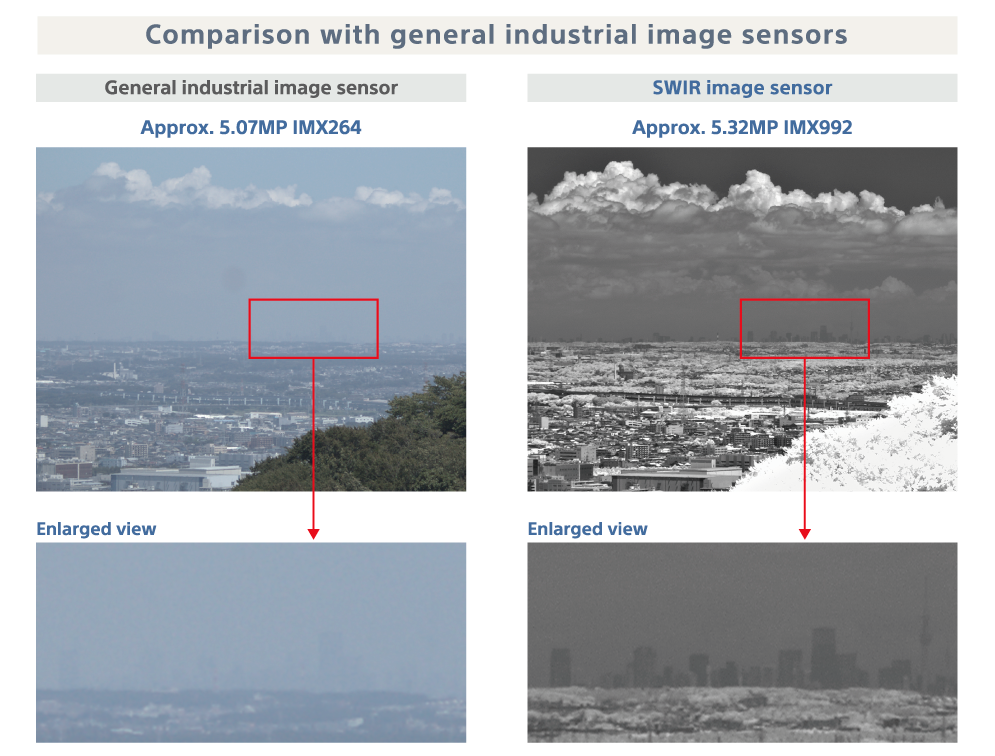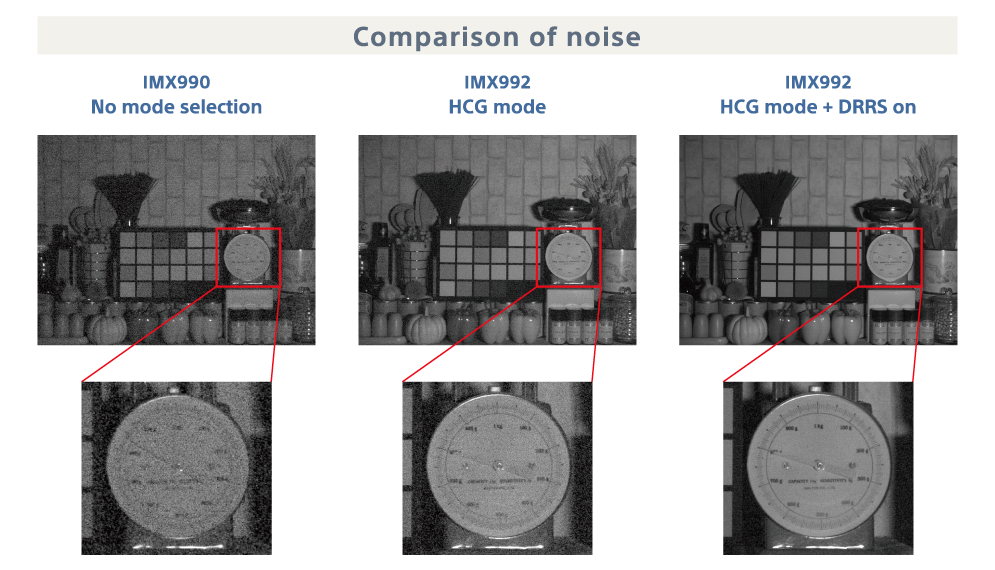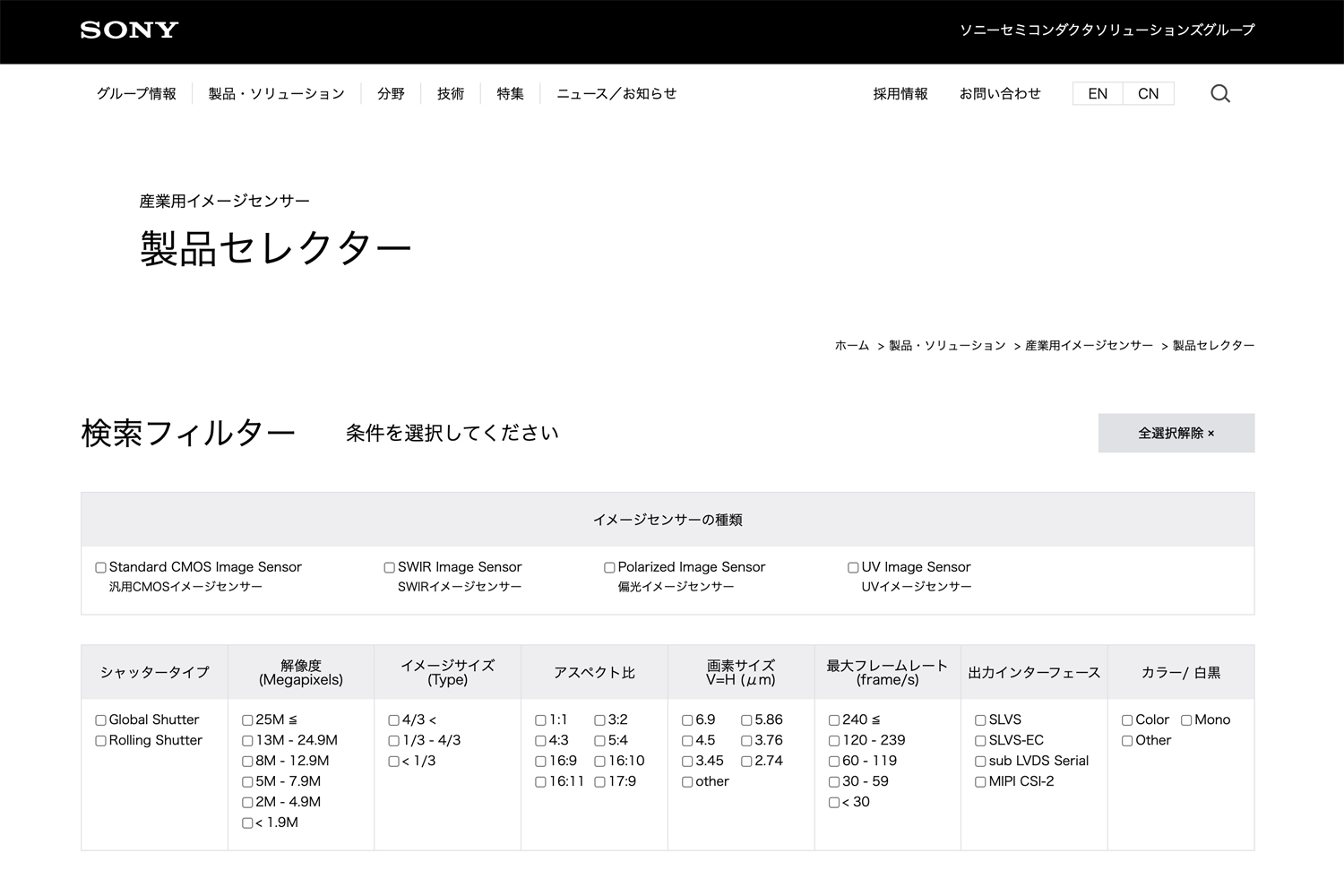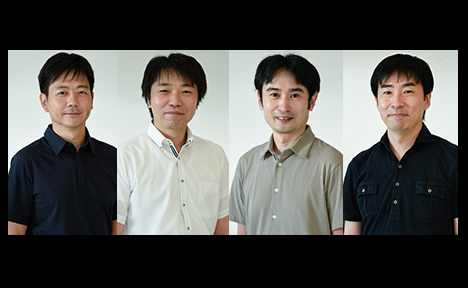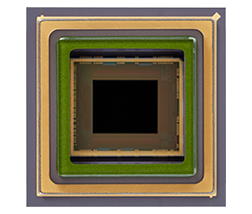
High-resolution, High-performance SWIR Image Sensor
1/1.4" 5.32MPIMX992
1/1.8" 3.21MPIMX993
Overview
SWIR (short-wavelength infrared) band light is increasingly used for inspection, measurement, and monitoring applications that aim to make the invisible world visible.
IMX992 and IMX993 SWIR image sensors are equipped with Sony’s original SenSWIR™ technology to offer even higher resolution and higher performance than comparable sensors. The small pixel size of 3.45μm achieves high resolution even with their compact size. Noise reduction mode can be enabled as the environment requires, allowing for vivid imaging even of tiny objects. These sensors use digital output to achieve high functionality and, as they are compatible with both SLVS and MIPI interfaces, camera settings are simplified and excellent flexibility in parts selection is possible.
Both of these high-performance SWIR image sensors offer precision and meet a variety of needs in industrial inspection, identification, and measurement applications, helping to boost productivity.
Features
The industry’s highest resolution*1 of 5.32 effective megapixels achieved high-definition SWIR imaging
The IMX992 and IMX993 have approximately 5.32 and 3.21 megapixels respectively, making them the highest-resolution SWIR image sensors in the industry.*1 To achieve this, Sony has used its original SenSWIR technology to develop a new small pixel size of 3.45 μm. The 5-megapixel-class resolution and cell-sized 3.45-μm pixel specifications are widely used in C-mount-sized general global shutter image sensors, these are the first industrial SWIR image sensors to achieve equivalent specifications.
Through high-resolution photography, these sensors offer vivid imaging even of tiny subjects, greatly improving precision in inspection and measurement applications that use SWIR-range light. They can also expand the imaging area while maintaining the same resolution, which is expected to improve efficiency through one-time large-scale imaging.
*1) Among industrial SWIR image sensors based on a compound semiconductor using InGaAs (indium gallium arsenide). According to research by Sony (as of November 2023).
In addition to equivalent resolution, they also offer vivid imaging of clusters of remote buildings.
SWIR imaging is not affected by fine airborne particles.
Related sectors: Remote and wide-area monitoring
Achieve low-noise performance regardless of the brightness or darkness of the environment
The IMX992 and IMX993 are equipped with shooting modes that can be selected according to each purpose. By selecting optimal mode, high-quality images with low noise can be obtained, regardless of the brightness or darkness of the environment. These sensors demonstrate their power in scientific measurement, outdoor observation, and other applications where image quality in low-light environments is important.
High conversion gain (HCG) and low conversion gain (LCG) modes
HCG mode amplifies the signal immediately after light is converted into an electrical signal, at a stage when there is still low noise, thereby reducing noise that occurs afterwards. This allows low-noise images to be obtained even in dark shooting environments, leading to improved recognition precision. In bright conditions where dynamic range is important, it is possible to switch to LCG mode.
Dual-read rolling shutter (DRRS) function
Furthermore, these Sony's image sensors are equipped with a DRRS function that allows shooting with reduced noise. This can obtain images with noise reduced to approximately 1/4 of the level that typically occurs without this function.
When DRRS is on, the image sensor outputs a pair of interchangeable images*2 of two different types. One contains both the imaging signal and the noise components, and the other contains only the noise components. These two images can be synthesized on the camera side to achieve images that largely eliminate the noise components.
*2) Because only one of the images contains the image signal, it does not cause artifacts, a phenomenon where the outline of a moving subject is blurred between the two images.
These functions make it possible to achieve extremely low-noise images even with small pixel size of 3.45μm.
Improved flexibility in camera settings thanks to MIPI compatibility
SenSWIR image sensors have generally used analog output, but Sony’s SWIR image sensors are compatible with digital output and boast functionality equivalent to industrial CMOS image sensors. Also, analog output has conventionally required camera-side functionality that is suitable for a digital conversion circuit or industrial machinery, but Sony’s SWIR image sensors incorporate these functions within the product. This reduces hours of required development work on the camera side and contributes to a more multifunctional camera.
Furthermore, the IMX992 and IMX993 are compatible not only with the SLVS interface, like most industrial cameras, but also with the MIPI, improving flexibility in camera settings and parts selection.
Capable of high-sensitivity imaging on any bandwidth, from visible light to SWIR
Just a single Sony's SWIR image sensor can perform imaging across a wide range of wavelengths, from the visible band to SWIR light (400 nm to 1700 nm). This means that inspections that used to require separate cameras for visible light and SWIR can now be performed with just a single camera, so these sensors can be expected to reduce system costs and improve throughput by achieving faster image processing.
The IMX992 and IMX993 offer the higher sensitivity performance, which is a feature of Sony’s SWIR image sensors, and improve the sensitivity in the visible light and NIR ranges. As a result, they achieve uniform sensitivity across a wide range of bands from visible light to SWIR. These image sensors minimize quality variations when switching wavelengths, enabling higher reliability and recognition precision.
Technology
Find out more about the SenSWIR technology.
Specifications
| Model Name | IMX992-AABA-C | IMX992-AABJ-C | IMX993-AABA-C | IMX993-AABJ-C | |
|---|---|---|---|---|---|
| Image size | Diagonal 11.4 mm(Type 1/1.4) | Diagonal 8.9 mm(Type 1/1.8) | |||
| Number of effective pixels | 2592(H)× 2056(V) Approx. 5.32 megapixels |
2080(H)× 1544(V) Approx. 3.21 megapixels |
|||
| Unit cell size | 3.45 μm(H)× 3.45 μm(V) | ||||
| Optical blacks | Horizontal | Front 96 pixels, rear 0 pixels | |||
| Vertical | Front 24 pixels, rear 0 pixels | ||||
| Frame rate (Max.) All-pixel readout mode |
8bit | 130 fps (TBD) | 170 fps (TBD) | ||
| 10bit | 120 fps (TBD) | 150 fps (TBD) | |||
| 12bit | 70 fps (TBD) | 90 fps (TBD) | |||
| Input drive frequency | 37.125 MHz / 74.25 MHz / 54 MHz | ||||
| Power supply | 1.2 V、1.8 V、2.2 V、3.3 V 2.2 V (pixel) |
||||
| Shutter mode | Global shutter (rolling shutter*5 when DRRS on) | ||||
| Output interface | SLVS(2 ch / 4 ch / 8 ch)/ MIPI(2 lane / 4 lane) | ||||
| Package | Thermoelectric cooling element |
Included | - | Included | - |
| Size | 30.0 mm(H)× 30.0 mm(V) |
21.0 mm(H)× 20.0 mm(V) |
30.0 mm(H)× 30.0 mm(V) |
21.0 mm(H)× 20.0 mm(V) |
|
| Sensitivity*1,*2 | TBD | ||||
| Saturation signal*1 | TBD | ||||
| Quantum efficiency*1,*3 | TBD | ||||
| Operability*1,*4 | TBD | ||||
|
|
|||||
*1) Tj=15℃
*2) F8、1/30 second accumulation
*3) λ=1200 nm
*4) Operability means the percentage of pixels free of defects.
*5) When DRRS is on, the maximum frame rate may differ from the values in the table above.
TBD: Not yet determined as the product is still under development.
Applications
Find out more about applications of SWIR image sensors.
Download
IMX990/IMX991/IMX992/IMX993 Product Overview
This document summarizes the product overview, features, and specifications.
Image Sensors with SenSWIR Technology
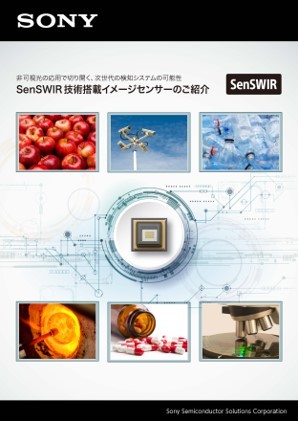
Introducing the details of the technology used in this SWIR image sensors
The SWIR Camera Photography Process and How Multispectral Images are Created
(The Food Inspection Edition)
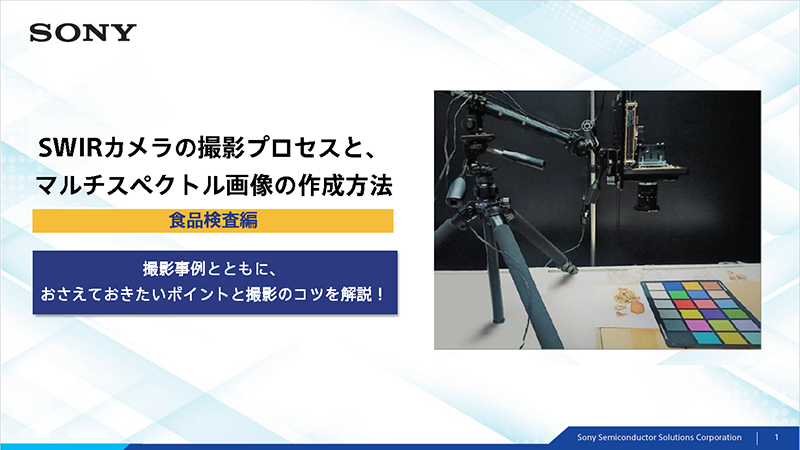
This document explains some key points and photography tips along with an example use case for SWIR camera evaluation.
Related Products & Solutions
-
Image Sensor
IMX990/IMX991 SWIR image sensors
Click here for product information on SXGA/VGA SWIR image sensors.
IMX990 (1/2" 1.34MP), IMX991 (1/4" 0.34MP) -
Image Sensor
SWIR image sensors [Overview]
Click here for the overview page on our SWIR image sensors that use SenSWIR short-wavelength infrared image sensor technology.
Related Links
Product & Service Inquiries
Click here to request for a datasheet/quotation (RFQ)!
* This button will redirect you to the salesforce.com Co., Ltd. website,
which we have entrusted.
E-mail Newsletters
Find the latest information on our newsletter for industrial and security applications.

